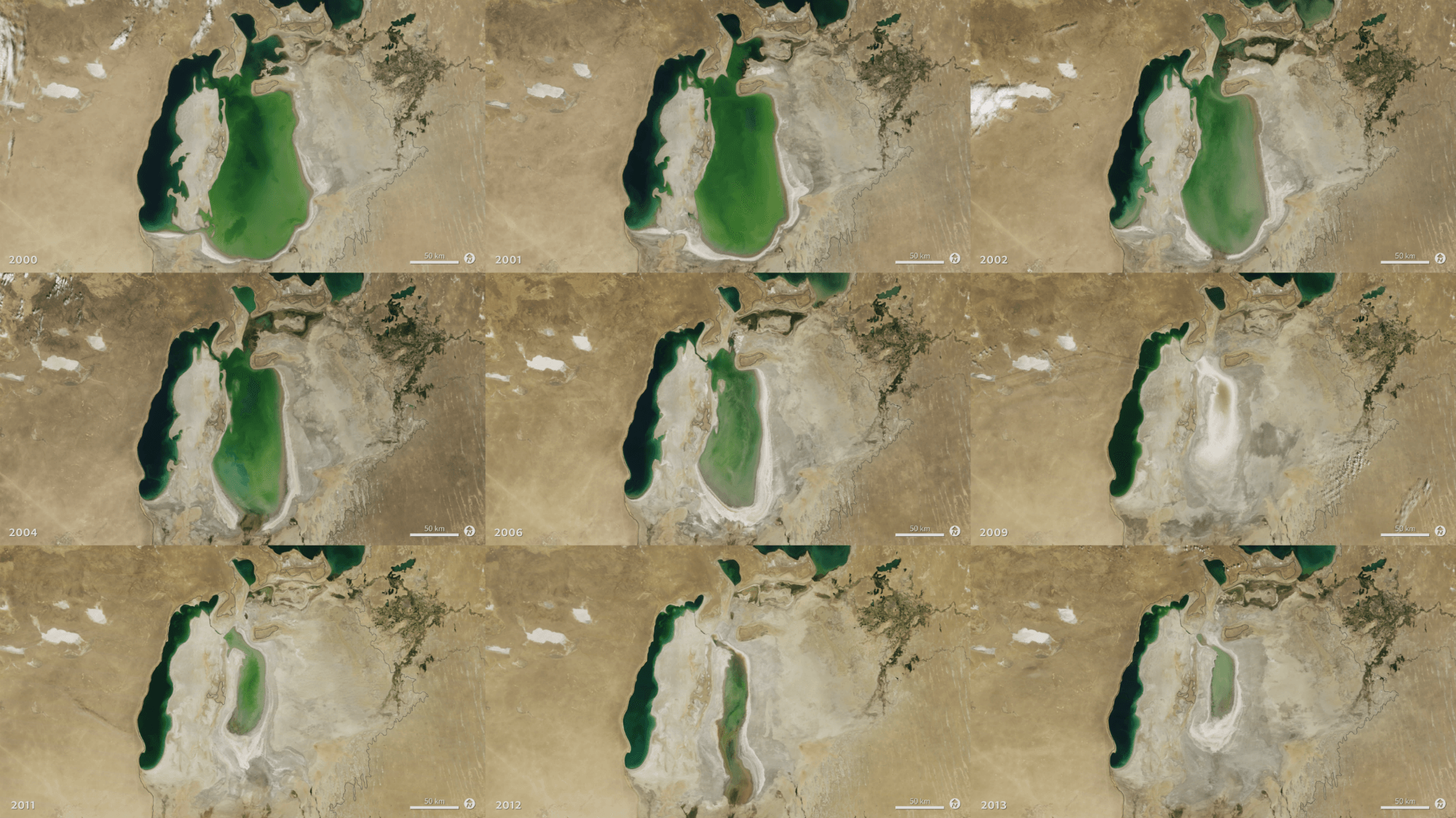The Aral Sea in Central Asia was formerly one of the four largest lakes in the world, with an area of 68.000 km2. As a consequence of a massive water diversion project to irrigate surrounding areas it is drying up. Today, not much is left.
Although irrigation made the desert bloom, it devastated the Aral Sea. Nasa has released a series of satellite images showing the lake drying up. As you can see in the image above: the Aral Sea in 2000, the first image on the left, and in 2013, the last one on the right.
The disappearance of the Aral Sea is one highly visible consequence of humanity’s action. The salt and mineral deposits left behind may one day become a geologic marker of our impact. And if future geologists will date these deposits, they’ll find a coincidence with many other signals of a big planetary environment transformation that occurred during our time.
The Anthropocene epoch, in which humanity and its instrumentalities are the most potent and influential geological force.
Find more at NASA Earth Observatory

Share your thoughts and join the technology debate!
Be the first to comment